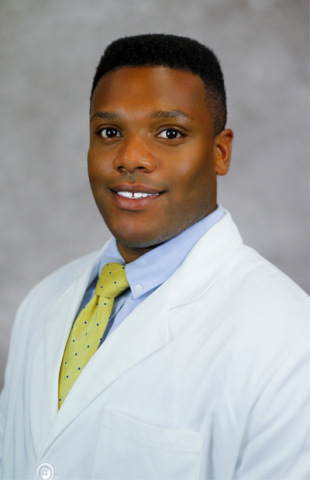I had the absolute pleasure of attending the Student National Medical Association’s (SNMA) Annual Medical Education Conference (AMEC) this year in Orlando, Florida. Given the restrictions enacted to protect communities against the COVID-19 pandemic, the 2022 AMEC was the first in person meeting held by SNMA in two years. The conference was held over four days and facilitated the largest gathering of underrepresented minority (URM) medical students in the nation, allowing for attendees to have face-to-face interactions with residency programs and admission officers, attend inspiring workshops and panels, and network with current residents from around the nation who share similar academic interests.
Duke ophthalmology was well represented at the American Academy of Ophthalmology’s (AAO) exhibit hall booth at AMEC. I was joined by Duke Eye Center’s alumna, Dr. Jaya Kumar who is a board-certified Vitreoretinal surgeon, and Jane Aguirre, the AAO’s Vice President of Membership and Alliances who directly represented the Academy’s Minority Ophthalmology Mentoring (MOM) program.
The purpose of the MOM program is to increase diversity in ophthalmology by helping URM medical students become competitive ophthalmology residency applicants. Despite an increasingly diverse US population, the proportion of US ophthalmologist originating from URM groups have remained low. Only ~6% of all practicing ophthalmologist identify as originating from URM groups, a statistic that has remained unchanged for nearly a decade (Xierali IM et al. JAMA Ophthalmol. 2016)
The MOM program aims to connect enthusiastic medical students with practicing ophthalmologist who can provide one-on-one mentorship, career guidance, and hands-on experience in the clinic using cutting-edge technologies to facilitate their exploration of the field. The program ultimately aims to provide scholars with clarity on how ophthalmologist lead such rewarding careers through preventing vision loss, while equipping them with tools to secure positions in top ophthalmology residency programs.
As a MOM alumnus, the highlight of the experience was standing side-by-side with Dr. Kumar advising medical students. We spoke to over ~100 medical students from around that nation about their interests and many were eager to learn about Duke culture, why we chose Duke Eye Center, our experiences living in the south as URMs, how we achieve work-life balance while living in Durham, strategies for navigating SF Match, and important attributes of the Duke Eye Center.
There were a few medical students, mostly MS1s, that I was able to directly motivate into making a commitment to explore the field of ophthalmology by applying for the MOM program. My recruitment success represents an accomplishment I am personally proud of as increasing the diversity of the ophthalmology work force is critical in ensuring that patients from diverse backgrounds have access to providers they identify with, thus helping to overcome barriers in compliance.
If you are a current medical student and interested in learning more about how you can best position yourself to take advantage of the resources available at Duke Eye Center, please reach out!
